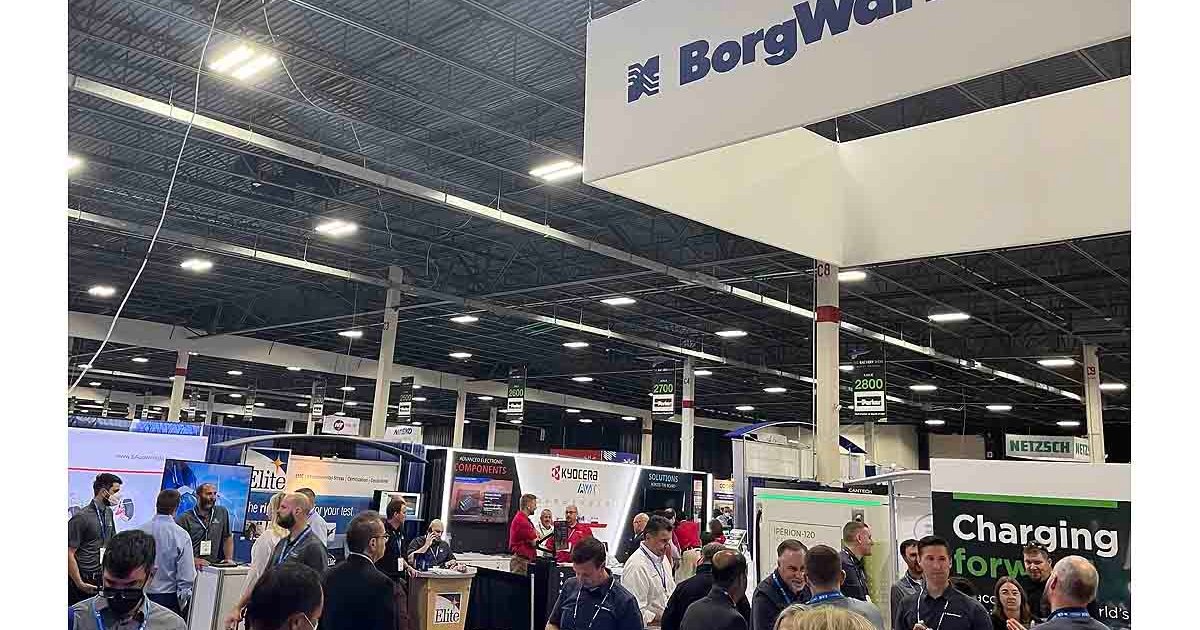
DETROIT — While automakers and dealers were showing off new electric vehicle offerings 30 miles down the road at the Detroit auto show, thousands of executives, engineers, salespeople and journalists gathered in Novi, Mich., at the Battery Show this week to discuss how the EVs of the future will be powered.
It’s an urgent topic. Automakers are setting aggressive EV sales targets, and the federal government is pressing for 50 percent of new-vehicle sales to be zero-emission by 2030. California is moving to ban the sale of new gasoline-powered vehicles beginning in 2035.
But the battery supply chain to make it all possible remains fragile. Automakers and battery companies are largely reliant on materials that are sourced and processed overseas. And even there, the amount of mining taking place only scratches the surface of what will be needed in the near future.
Executives, analysts and economists at the Battery Show discussed how to address those challenges. Here are three takeaways.
Federal legislation is a big boost
The U.S. government has committed billions of dollars in recent months to boost the nation’s ability to process crucial EV battery materials such as lithium and build batteries domestically.
In May, the Biden administration said it would spend more than $3.1 billion to support domestic manufacturing of advanced EV batteries. And the Inflation Reduction Act’s revamped EV new-vehicle sales credits will require 80 percent of critical battery materials to have been extracted or processed in the U.S., or in a country where the U.S. has a free-trade agreement in place, by 2027.
Battery Show attendees said the moves make it clear that the federal government is committed to building a local battery supply chain.
Recent legislation “provides for an enormous advancement in the battery supply chain, particularly in the beginning parts of the supply chain, in the mining sector,” Todd Malan, head of climate strategy at metals company Talon Metals, said during a panel discussion.
Companies that build EVs are going to need more critical materials — and fast. Jon Cherry, CEO of Canada-based Polymet Mining, cited a World Bank document on mineral needs that put the situation into perspective: In 5,000 years of civilization, the world has consumed about 550 metric tons of copper. It will need to produce that same amount in the next 25 years to meet new global demand, the document said.
The U.S. is also heavily reliant on China for battery material processing, leaving the supply chain open to geopolitical risk and higher shipping costs. China processes about 71 percent of the world’s lithium, as well as 65 percent of its cobalt and 35 percent of its nickel, said Wolfgang Bernhart, a senior partner at consultant Roland Berger.
“Not securing the supply of raw and refined materials will jeopardize business models around EVs,” Bernhart said.
More needs to be done, and faster, executives say
Because of increased demand and actions by the federal government, there will be greater demand to mine materials domestically and in trading partner nations, said Ken Hoffman, co-head of EV battery materials research at McKinsey & Co.
“This is the single most important aspect of how we are going to deal with global warming,” he said. “The only way we can get the EV battery train rolling is through mining. Fortunately, you’re seeing the U.S. government come through in a very big way.”
However, it can take as long as a decade to get a mine up and running in the U.S. — a long process that could hamper efforts to boost domestic capacity, Cherry said. Permitting and litigation costs can run in the hundreds of millions of dollars “before a shovel even gets into the ground.”
“Mining measures things in geological time, and unfortunately, that’s what permitting is today, too,” Cherry said.
This year, President Joe Biden, Senate Majority Leader Chuck Schumer and House Speaker Nancy Pelosi said they would pass “comprehensive” permitting reform by October. But details on the proposal have been sparse, and it has drawn criticism from some congressional Democrats who say it would serve to boost fossil fuel projects and contribute to global warming.
“It would provide some help, but it won’t be transformative,” Malan said. “There just aren’t the votes for transformative permitting reform.”
Recycling will be crucial in the future
Finding ways to recycle critical materials from batteries used in old EVs will also receive new attention around the industry, executives said.
The Inflation Reduction Act counts materials that are recycled in the U.S. as having originated in the country, potentially providing companies a way to meet more stringent EV targets without having to rely on new mining projects.
“If we can capture large amounts of recycled battery materials, we can reduce the cost of production of new batteries and new cells, and reduce the amount that needs to be mined and processed,” said Anthony Burrell, chief technologist of energy storage at the National Renewable Energy Laboratory.
But that process is going to take time — if for no other reason than the fact that not many used EVs have batteries that have reached the end of their life cycle.
“If we look 10 years ago, there were only a few thousand EVs in the world, which means you only have a couple thousand EVs that can be recycled today,” Hoffman said.
Malan said that advocates for domestic mining and environmental advocates need to “have a conversation” about why more mining is critical to producing more EVs. But longer term, recycling will play a bigger role.
“I think people in 2040 and 2050 are going to be able to talk about reducing mining and think about a circular battery system,” he said. “But we’re not there yet.”
Bloomberg contributed to this report.